| DC67295 |
Lipid MK16
Featured
|
MK16 is a specialized lipid designed to traverse the blood-brain barrier (BBB) for effective mRNA delivery. Its formulation, MK16 BLNP, leverages dual mechanisms involving caveolae and γ-secretase to facilitate BBB penetration, ensuring the targeted and efficient transport of functional mRNA to diverse brain cell types. Demonstrating excellent tolerability across a range of dosing regimens, MK16 BLNP represents a promising platform for brain-targeted therapeutic applications. |
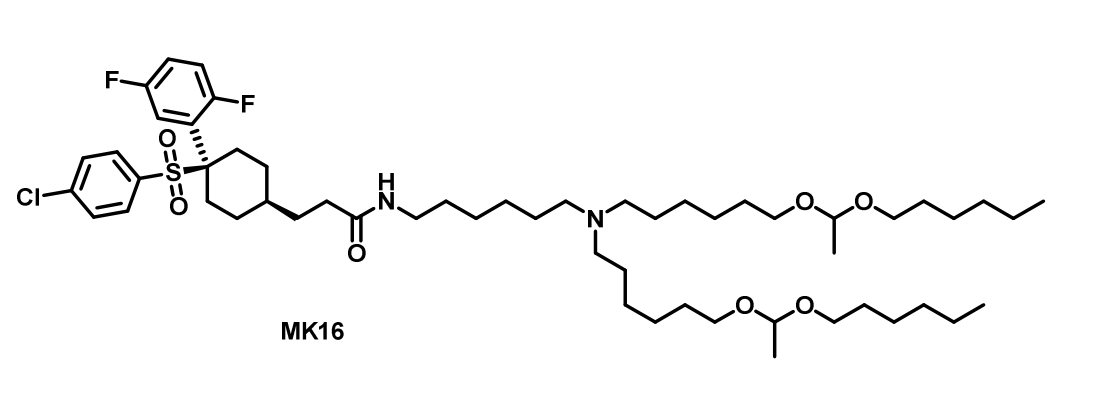
|
| DC67279 |
Rhobo6
Featured
|
Rhobo6 is a cell-impermeable small-molecule fluorophore designed for labeling the extracellular matrix (ECM) in live tissues. It contains a phenylboronic acid group that binds to diols commonly found in ECM glycans, resulting in a significant increase in fluorescence and a red shift in emission spectra. This property allows Rhobo6 to effectively visualize ECM architecture without perturbing native structures, making it suitable for long-term imaging studies. Additionally, Rhobo6's low affinity for monosaccharides enables reversible binding, which prevents photobleaching and allows for dynamic imaging of ECM components. While Rhobo6 does not specifically target individual ECM components, it provides a holistic view of ECM distribution and is particularly useful for studying ECM-related biological phenomena in samples that are not amenable to genetic manipulation or ex vivo culture. |
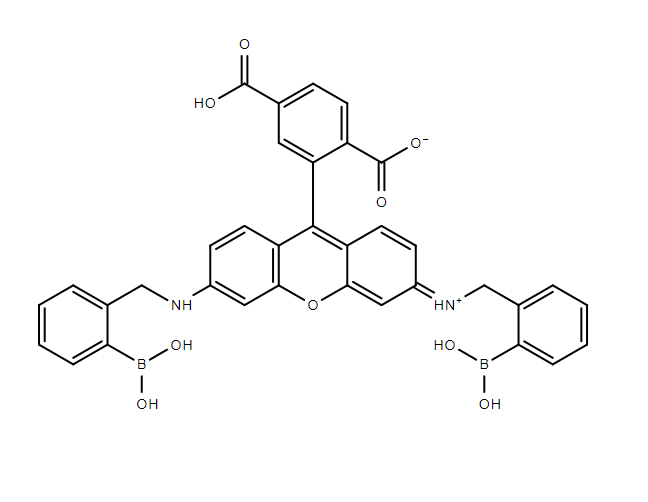
|
| DC60676 |
MRT6160
Featured
|
MRT-6160 represents a groundbreaking molecular glue degrader designed to selectively target VAV1, achieving its proteasomal degradation with a DC50 value of 7 nM. This innovative compound showcases its unique mechanism and therapeutic potential. |
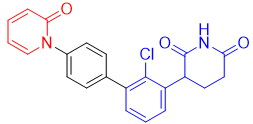
|
| DC60636 |
Acid-degradable Cationic Lipid (ADC)
Featured
|
Acid-degradable Cationic Lipid (ADC) composed of cationic lipid is synthesized with the azido-acetal linker and used to generate RD-LNPs, which significantly improves the performance of LNP-mRNA complexes in vitro and in vivo. |
.png)
|
| DC60559 |
PT-179
Featured
|
PT-179 is a new orthogonal immunomodulatory drug (IMiD) derivative that binds CRBN but does not induce degradation of off-target proteins. PT-179 potently degrades proteins fused to SD40 at either the N or C terminus. |
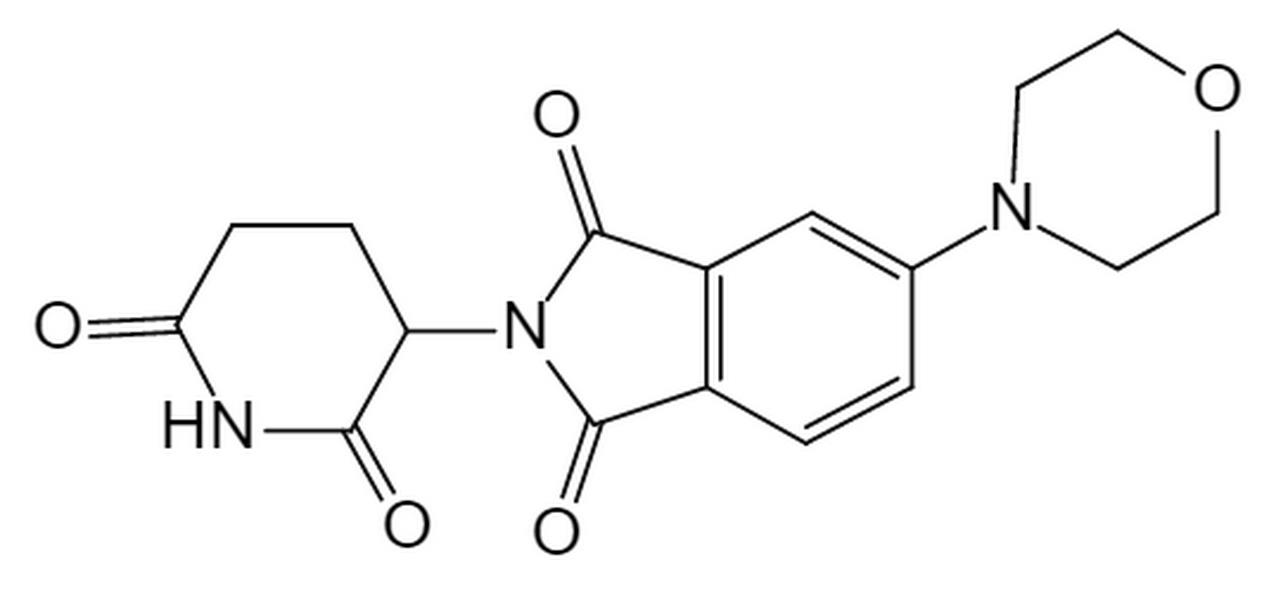
|
| DC60518 |
ACBI3
Featured
|
ACBI3 is a selective, potent and in vivo active pan-KRAS PROTAC degrader, potently degrades 13 out of 17 of the most prevalent oncogenic KRAS alleles (DC50=3.9 nM in GP2d cells). |
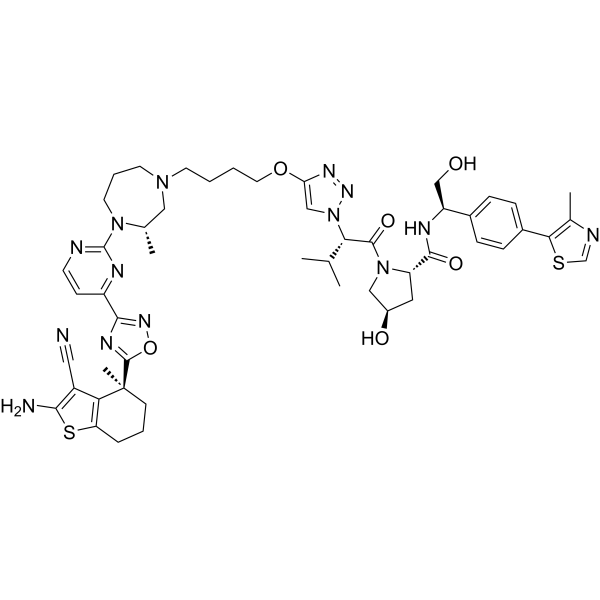
|
| DC60502 |
GalNAc-Lipid GL6
Featured
|
GL6 is a trivalent GalNAc-lipid conjugate designed for ASGPR-mediated hepatic delivery. It features a lysine-based scaffold covalently linked to three GalNAc moieties via a 36-unit PEG spacer, anchored by a 1,2-O-dioctadecyl-sn-glyceryl (DSG) lipid tail. This structure balances ligand accessibility (via optimized PEG length) and nanoparticle stability (via hydrophobic DSG anchoring). Compared to GL3 (TRIS scaffold, same PEG length), GL6’s simplified lysine scaffold improves manufacturability. In LDLR-deficient models, GL6 enabled 61% liver editing (vs. 5% with standard LNPs) at 2 mg/kg, demonstrating superior ASGPR targeting. Its design minimizes ligand crowding (0.05 mol% surface density) while maximizing endosomal escape and durable gene editing. |

|
| DC60444 |
FX-909
Featured
|
FX-909(FX 909) is a first-in-class inverse agonist of the peroxisome proliferator-activated receptor gamma (PPARG) lineage transcription factor with EC50 of 1 nM and shows >2000-fold selectivity for PPARG over PPARA/PPARD - acting through a mechanism that promotes a repressive conformation of PPARG.
|
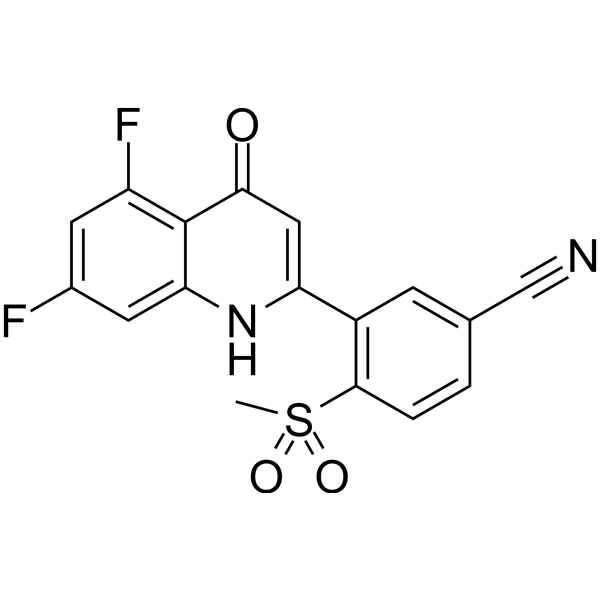
|
| DC72546 |
Tri-GalNAc-NHS ester
Featured
|
Tri-GalNAc-NHS ester is a LYsosome TArgeting Chimera (LYTAC) and a ligand of asialoglycoprotein receptor (ASGPR). ASGPR is a lysosomal targeting receptor specifically expressed on liver cells, for the degradation of extracellular proteins including membrane proteins. Tri-GalNAc-NHS ester can be used as a protein degrader and it can be used for the research of LYTAC. |
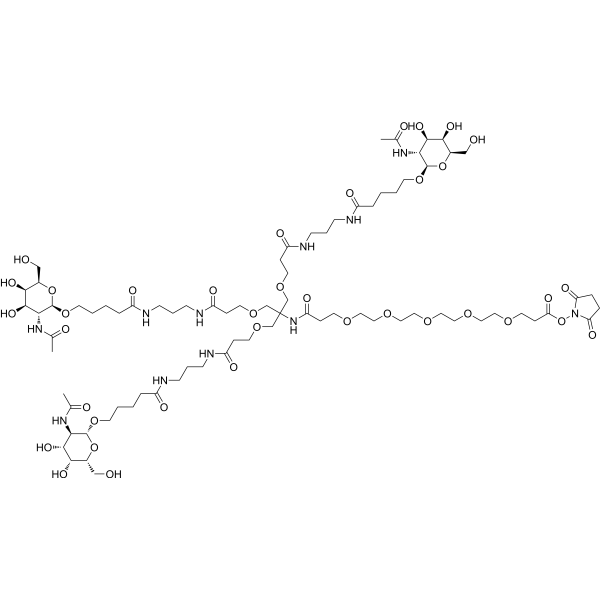
|
| DC70648 |
NH-23-C2
Featured
|
NH-23-C2 (Caspase-2 inhibitor NH-23-C2) is a potent, selective and cell-permeable endogenous caspase-2 inhibitor, does not block caspase-3 or caspase-8.NH-23-C2 displays off-reactivity with cysteine and threonine proteases (cathepsins B, L, V, S).HCT116 cells were preincubated with NH-23-C2 inhibitor, MDM-2 cleavage was inhibited in a concentration-dependent manner (IC50 =3.11 μM).NH-23-C2 selectively block caspase-2 activity and caspase-2-mediated MDM-2 cleavage. |
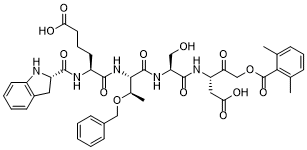
|













.png)




